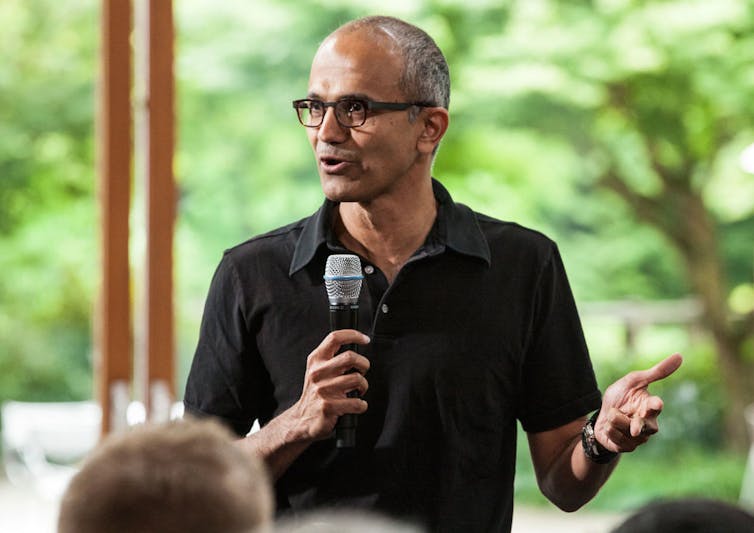In a move certain to raise the ire of users of Microsoft’s Windows operating system the software giant has announced that next month it will cease support for Windows 8.1.
But that operating system is barely eight months old and already an upgraded version of the Windows 8 system that failed to impress many users since its release in 2012.
Microsoft has this month already killed off support for the long-lasting Windows XP system, so why is it ending support for Windows 8.1?
The aim is to force users to install Windows 8.1 Update, thus establishing it as the new service and support baseline for users. The Update is actually a cumulative collection of all that has already been released for the Windows 8 operating system plus some new improvements for desktop users.

Microsoft traditionally releases any security patches to its operating system and software on the first Tuesday of the month – known as Patch Tuesday.
The software giant is urging all Windows 8 and 8.1 users to upgrade now as any patches released in next month’s Patch Tuesday on May 13 “will be dependent on Windows 8.1 Update”. No Update means no further security patches will be installed.
That means people who stay with standard Windows 8.1 will find themselves in the same position as Windows XP users after Microsoft ceased support earlier this month after 13 years.
Why not just upgrade?
Getting users to upgrade to newer, more secure versions of Windows has always been a problem for Microsoft. Today, more people are still using the older Windows 8 than 8.1, even though the later version is free and is an improvement on the old.
Why are people slow to install upgrades? Probably because they are busy and the update process is a disruption to their work-flow, taking time and enforcing a re-boot. The user then has to re-open their applications and re-load their work-in-progress. People probably think, “I’ll do that later” but they seldom do.
But for 8.1 users, the longer they leave it to upgrade, the more they risk being hacked.
Windows 8.1 Update is an improvement
The irony is that regardless of how authoritarian Microsoft’s efforts have been to get people to upgrade, this new release is an improvement worth having.
It is one that most users are likely to appreciate once they have installed and got used to the changed setup.
New features of Update include the default booting of users without touchscreens to the desktop and the default use of desktop applications.
The sensitivity of those pop-up “hot corners” has been reduced, recently installed apps are highlighted and generally a much improved user interface for keyboard and mouse users.
On the technical side, the size of the installation package has been halved from 32Gb to 16Gb. Being leaner, Update also performs faster on older hardware while reducing the minimum RAM from 2Gb to 1Gb.
Windows 8.1 Update is probably the version that Microsoft should have released from the beginning. If it had, then Windows 8 may not have received so much harsh criticism and disappointing user uptake, being variously described as an unfinished touchscreen operating system aimed at tablet users.
What’s that!? Windows 8.0 supported until January 2016?
One of the most baffling aspects of the Windows 8.1 Update story is that users of the original, much-maligned Windows 8 will continue to be supported by Microsoft until January 2016.
If Microsoft’s intention is to establish 8.1 Update as the “service and support baseline” why would they not insist that Windows 8 users also upgrade. Why take a hard line with 8.1 and not 8.0? It doesn’t make sense.
Unforeseen complications
Compounding the difficulties for users wanting to upgrade, it was announced earlier this month that the Windows 8.1 Update was having SSL problems that held up deployment of the upgrade for a few days.
This issue has since been resolved, but it could not have come at a worse time with the Heartbleed security bug creating alarm around the world with its exploitation of an OpenSSL library vulnerability.
The best advice is for all users to do a manual check to make sure they have access to the latest software upgrade and get it installed as soon as possible, ahead of the deadline. Simply relying on automatic updates is not enough.
A race against time
So the clock is ticking. With support for Windows 8.1 ending on May 13, and various problems rendering their 8.1 Update package problematic, time is running out fast for both Microsoft and those people who are trying to comply with the strong-arm directive to upgrade there computers before support ends.

But Microsoft’s new CEO Satya Nadella has only been on the job since February 2014 and already we are seeing much activity at the US headquarters these days;
- Office for iOS,
- Office on Android,
- free Windows for phones and small tablets,
- Cortana (a Siri-like AI).
There will be plenty more too in the run-up to the release of Windows 9 sometime in 2015.
With Microsoft’s market share still under threat from Apple, the Windows 8.1 Update mandate is a high-stakes gamble that may yet pay off for the company – as the old saying goes “you have to risk going too far to discover just how far you can really go.”

